Bible
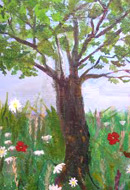 From New Year to Arbor Day
From New Year to Arbor DayWednesday, January 19, 2011 by Moshe Sokolow | Jewish Ideas Daily » Daily Features
The holiday of Tu Bishvat ("the fifteenth of Shvat") falls this year on Thursday, January 20. What are its origins, and when and why did it become incorporated into the calendar as the Jewish "Arbor Day"?
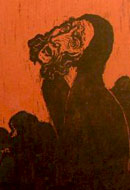 Where Have All the Prophets Gone?
Where Have All the Prophets Gone?Tuesday, January 18, 2011 by Aryeh Tepper | Jewish Ideas Daily » Daily Features
Writing in 1911, Martin Buber declared that "the nature of the prophets" lives within the Jewish people. A hundred years later, do any Jews still believe this?
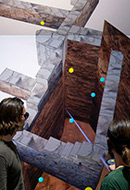 Science, Faith, and Biblical Archeology
Science, Faith, and Biblical ArcheologyMonday, January 17, 2011 by Alex Joffe | Jewish Ideas Daily » Daily Features
Biblical archeology was born out of twinned desires: to "illuminate" the world of the Bible and, ultimately, to prove the truth of the Word.
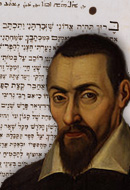 The Huguenot Connection
The Huguenot ConnectionMonday, January 3, 2011 by Allan Nadler | Jewish Ideas Daily » Daily Features
In the darkest hours of the Holocaust, the safest place for Jews in occupied Europe may have been the southern French hamlet of Le Chambon-sur-Lignon.
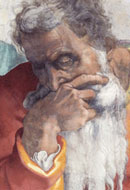 Needing Jeremiah
Needing JeremiahWednesday, November 10, 2010 by Aryeh Tepper | Jewish Ideas Daily » Daily Features
One of the most significant accomplishments of the Zionist project was to re-vitalize the Bible as a Jewish national document. Or, if not the Bible as a whole, at least parts of the Bible. The early Zionists were attracted in particular to those books, like Joshua and Isaiah, which appealed to the dream of return and political restoration. One biblical book that most definitely didn't fire the Zionist imagination was the book of Jeremiah.
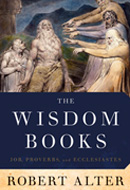 Englishing the Hebrew Bible
Englishing the Hebrew BibleFriday, October 8, 2010 by David Curzon | Jewish Ideas Daily » Daily Features
All translators of the Hebrew Bible into English work in the shadow of the genius of the King James Version (KJV), done in the 17th century and still in wide use today despite its thee's and thou's. Jewish translations, following the sequence and other features of the Hebrew Bible, and guided by rabbinic understandings, have been brought out by the Jewish Publication Society (JPS) and others.
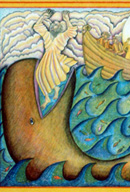 Jonah and Yom Kippur
Jonah and Yom KippurWednesday, September 15, 2010 by Meir Soloveichik | Jewish Ideas Daily » Daily Features
Read in its entirety in the synagogue in the afternoon of Yom Kippur, Jonah is the only multi-chapter book of the Bible to be so honored. Indeed, one commentator, observing that the brief Torah reading that precedes Jonah has little to do with the day, but merely continues where the morning reading left off, has suggested that this may be precisely in order to emphasize that, in a departure from the usual priorities, the haftarah, or prophetic portion, is in fact the critical text for the occasion. But what makes it so significant, and what lesson does it really teach about Yom Kippur?
Wednesday, August 25, 2010 by David Hazony | Jewish Ideas Daily » Weekly Portions
By David Hazony Nearing the end of his farewell address to the Israelites, Moses describes a peculiar ceremony they are to perform after entering Canaan.
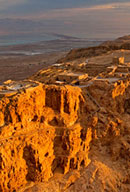 Digging King Herod
Digging King HerodFriday, August 20, 2010 by Aryeh Tepper | Jewish Ideas Daily » Daily Features
King Herod was a Jew of doubtful origin who ruled Israel in the years 40-4 B.C.E. During this same period, the Roman republic was being replaced by the Roman Empire with its vast expansionist aims. Relying on Roman support for his power, Herod was, in effect, Israel's little Roman emperor. And he played the part, bringing administrative order and economic prosperity to the country and creating hugely ambitious architectural projects. In the Roman way, he was also cruel, paranoid, and thorough, killing his wife, three sons, and an assortment of other relatives and confidants.
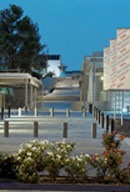 The New Israel Museum
The New Israel MuseumFriday, August 13, 2010 by Aryeh Tepper | Jewish Ideas Daily » Daily Features
An expanded and revamped Israel Museum re-opened to the public in late July after three years of renovations. While the modest architecture remains as it was, the modernist cubes rolling with the Jerusalem landscape, the jumble of buildings has been streamlined: 25,000 square feet of exhibition space have been added, but the number of items on display has been reduced by a third. Overall, the design is significantly more user-friendly, with a spacious new entrance hall leading to the museum's remarkable collections, including its three most significant wings: archeology, Jewish art and life, and fine art.
Editors' Picks
Pooling Genes Gianna Palmer, Forward.
A new scientific paper uses DNA to assert a genetic link between Jews and Africans—a link also attested by ancient Jewish tales of trade and other exchanges with sub-Saharan Africa.
Me and Jonah Harold Bloom, New York Review of Books.
My favorite book of the Bible is a sly masterpiece, a parody of prophetic solemnities, a magnificent piece of literature because it is so funny.
Amy Winehouse, Cremation, and the Jews Alan Brill, Book of Doctrine and Opinions.
More than half of Americans in Western states are being cremated after death; can the Jewish community be far behind, and where have modern Jewish authorities stood on the issue?
For Whom the Bell Tolls Associated Press. Did a tiny ancient golden bell, found near the Temple Mount and making a faint metallic clink, once adorn a priestly garment?
Whale on Rye Natan Slifkin, Rationalist Judaism. If a whale had cloven hooves and chewed its cud, would it be kosher?
Cantors and Levites Jonathan L. Friedmann, Daily Rabbi. Five years of formal schooling may seem like a lot, but as with the Levites in the ancient Temple, the musical and Jewish training of today's cantors is a lifetime's affair.
Certified Kosher University of Haifa.
The list of animals permitted for consumption in the book of Deuteronomy includes the aqqo, the dishon, and the zemer; but what exactly are they?
A Living, Humming Instrument Allan Nadler, Forward.
The great poet of cultural Zionism, Hayim Nahman Bialik (1873–1934), also gave voice to the predicament of loving religious Judaism while violating its norms.
The Three-Week Challenge Erica Brown, Text & Texture. The mourning rituals of the period leading up to Tisha b'Av (this year on August 9) are largely foreign territory to non-Orthodox Jews; but doesn't everyone know the meaning of loss?
Polygamy Now? Gil Student, Torah Musings. Calls for lifting the Jewish ban on polygamy may respond to a felt need, but violate a millennium-old proscription that protects the dignity and rights of women.

